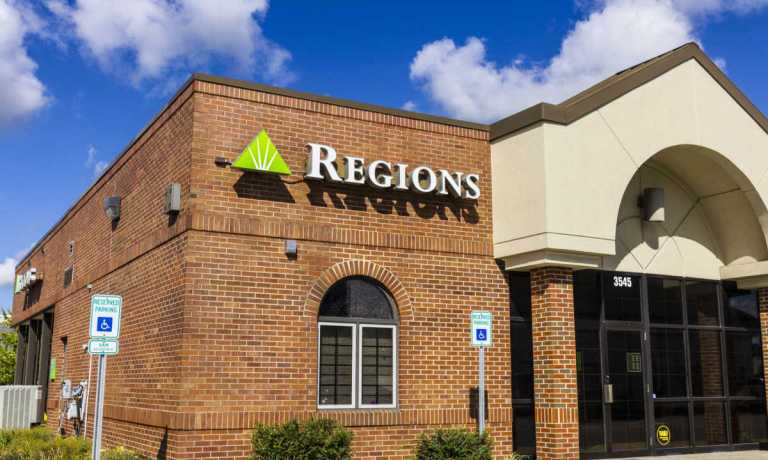
Two months after laying off 3% of its workforce, the Birmingham, Alabama-based Regions Bank posted disappointing Q1 earnings Friday (April 19).
The southeastern regional’s results were driven by higher expenses despite the headcount reduction, FDIC assessments and an adjustment to its securities accounting.
By the numbers, the bank showed solid liquidity and cautiously optimistic consumer metrics. It reported a Q1 2024 net income of $343 million, adjusted for increased FDIC special assessment accrual and severance-related charges from the headcount reduction.
Total revenue for the quarter was $1.7 billion, down over 4% compared to Q4 2023. Net interest income fell by 4% to $1.2 billion, influenced by rising deposit and funding costs, although partially offset by benefits from higher market interest rates on new asset originations. Net interest margin also saw a slight decline of 5 basis points, settling at 3.55%.
Non-interest income showed a varied performance, decreasing 3% on a reported basis but increasing 6% on an adjusted basis. This was primarily due to a $50 million loss from securities repositioning.
Noteworthy increases were seen in capital markets income, which surged by 90% to $91 million, driven by heightened real estate transactions and advisory services. Mortgage income also rose, supported by better volumes and improved margins. Conversely, decreases were noted in card and ATM fees, impacted by higher associated costs and seasonally lower transaction volumes.
Regions CEO John Turner said during the bank’s earnings call that said both net interest income and fee revenue demonstrated resiliency in the face of lingering “macro-economic and political uncertainty,” adjusted by interest expenses increased quarter over quarter and is likely to reflect the best results the bank will see during calendar 2024.
“Average losses were lower quarter over quarter, reflecting limited client demand, client selectivity pay downs and an increase in debt,” Turner said. “Capital markets and averaging ending deposits continued to grow during the quarter consistent with seasonal patterns that continue to perform in line with our expectations.
“While pressure remains within pockets of business lending our consumers remain strong and healthy, we anticipate overall asset quality will perform consistent with historical levels experienced prior to the pandemic,” he added.
Despite its lackluster performance, the bank’s metrics and executive comments showed a positive outlook about the current state and future prospects of the U.S. consumer.
The Q1 results showed stable average consumer loans, with a slight 1% decline in overall average loans and leases. The deposit base showed modest increases and a continued shift from non-interest-bearing to interest-bearing products. Asset quality metrics showed an increase in non-performing loans mainly in stressed sectors such as office, professional services, transportation and manufacturing.
“On the consumer side, we did a pretty good job growing mortgage, growing interbank (payments) and growing our card business, but it was offset by clients and home equity, which makes appear that the consumer business was flat, but it is actually in really good shape. We feel good about that. We just don’t see a lot of loan growth,” Turner said.